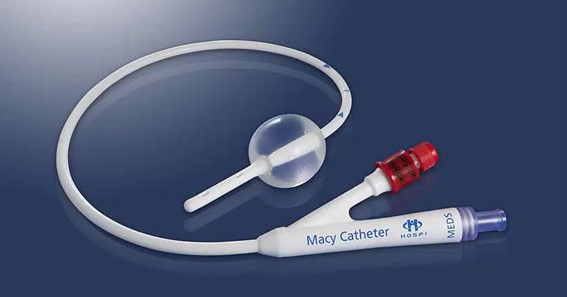Are you curious to know what is a rectal tube? You have come to the right place as I am going to tell you everything about a rectal tube in a very simple explanation. Without further discussion let’s begin to know what is a rectal tube?
In medical settings, various devices are employed to assist with patient care and treatment. One such device is a rectal tube. While the name may sound unfamiliar to many, rectal tubes play a significant role in managing certain medical conditions and facilitating procedures. In this blog post, we will delve into the world of rectal tubes, exploring their purpose, uses, and important considerations.
What Is A Rectal Tube?
A rectal tube is a flexible, hollow tube typically made of medical-grade silicone or PVC. It is designed to be inserted into the rectum, the lower part of the gastrointestinal tract, through the anus. The tube features multiple side holes along its length to facilitate the passage of substances or fluids.
Purpose And Uses Of Rectal Tubes:
- Decompression: One primary use of rectal tubes is to provide decompression in cases of bowel obstruction or excessive gas accumulation. By inserting a rectal tube, medical professionals can facilitate the release of trapped gas or fecal matter, relieving discomfort and reducing the risk of complications.
- Medication Administration: Rectal tubes can be used to administer medications or treatments directly into the rectum. This route of administration is particularly useful when patients are unable to take medications orally or have difficulties with absorption in the gastrointestinal tract.
- Enema Delivery: Rectal tubes are commonly utilized in the administration of enemas. Enemas involve introducing a solution into the rectum to facilitate bowel movements or deliver medications. Rectal tubes provide a conduit for the enema solution to enter the lower bowel, promoting the desired therapeutic effect.
- Colostomy/Ileostomy Care: In individuals with colostomies or ileostomies, where a portion of the colon or small intestine is redirected to an opening in the abdominal wall, rectal tubes can be used to aid in the management of stool output. They help to control the flow and prevent leakage around the stoma site.
Important Considerations:
- Proper Insertion and Technique: Inserting a rectal tube requires proper technique and sterile procedures. It is typically performed by trained medical professionals to minimize the risk of injury or infection.
- Patient Comfort and Safety: Patient comfort is of utmost importance when using rectal tubes. Lubrication, gentle insertion, and appropriate sizing of the tube can help reduce discomfort and potential trauma. Regular assessment and monitoring are essential to ensure the patient’s safety and well-being throughout the procedure.
- Risks and Complications: While rectal tubes are generally safe when used correctly, there are potential risks and complications to be aware of. These can include irritation, mucosal damage, infection, and, in rare cases, perforation. It is crucial to follow proper guidelines and monitor patients closely to minimize these risks.
- Healthcare Professional Guidance: The use of rectal tubes should always be performed under the guidance and supervision of healthcare professionals. They have the expertise to determine the appropriate indications, techniques, and precautions for using rectal tubes based on the patient’s specific needs and condition.
Conclusion:
Rectal tubes are versatile medical devices that serve various purposes in managing certain medical conditions and facilitating procedures. Whether for decompression, medication administration, enema delivery, or colostomy/ileostomy care, rectal tubes play a crucial role in patient care. Understanding their purpose, uses, and important considerations is vital for healthcare professionals and patients alike. When used correctly and with proper guidance, rectal tubes can provide valuable assistance in managing gastrointestinal conditions and promoting patient comfort and well-being.
Assemble more facts on different topics like these on Countspeed
FAQ
What Is The Purpose Of A Rectal Tube?
Fecal management systems, which involve rectal tubes that divert stool to an external collection bag, are available to manage selected patients with fecal incontinence.
Can You Sit With A Rectal Tube?
Ensure that the patient does not lie or sit on the catheter as this could lead to localised pressure damage and contribute to the development of anal skin breakdown and/or restrict fecal flow. 6. Solid or soft-formed stool cannot pass through the catheter and will obstruct the opening.
What Is A Rectal Tube Called?
Balloon rectal tube (rectal catheter). The traditional approach, and in today’s technological environment the least safe, is the use of a rectal catheter. These indwelling catheters (20 to 30 French) are connected to a bedside drainage bag.
What Is A Rectal Tube For Pooping?
In a cecostomy, the healthcare provider puts a tube (catheter) into the first part of the large intestines (cecum). It is in the lower right abdomen. The provider injects liquid medicine into the cecum through this tube. The medicine helps coax the feces out of the body through the rectum.
I Have Covered All The Following Queries And Topics In The Above Article
What Is A Rectal Tube Used For
What Is The Purpose Of A Rectal Tube?
What Is The Purpose Of A Rectal Tube
What Is A Rectal Tube In Midwifery
What Is A Rectal Tube Used For In Midwifery
What Is A Glass Rectal Tube Used For
What Is A Glass Rectal Tube
What Is The Purpose Of A Rectal Tube
How To Insert A Rectal Tube
Rectal Tube Indications
Rectal Tube For Diarrhea
Rectal Tube Indication And Contraindication
Rectal Tube Contraindications
Rectal Tube Nursing
What Is A Rectal Tube
Can you sit up with a rectal tube
What is the purpose of a rectal tube
